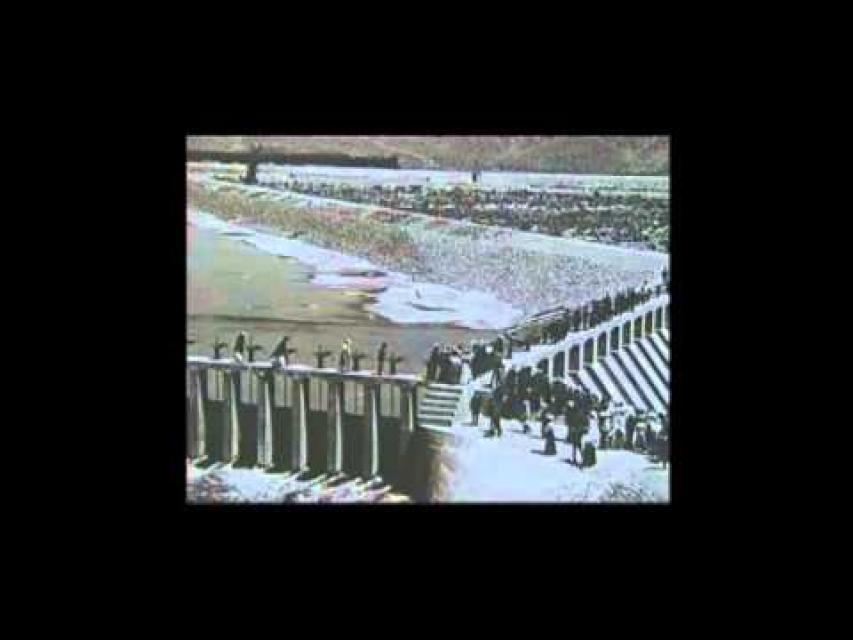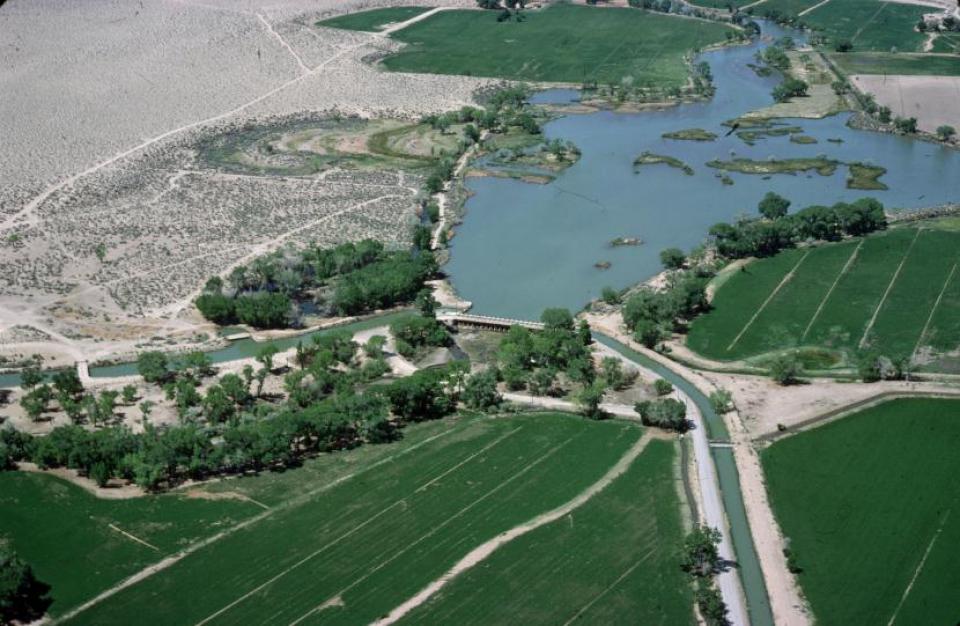Carson River and the Newlands Project
The Carson River begins in the Sierra Nevada southeast of Lake Tahoe as two separate forks.
The East Fork begins in the mountains of California’s Sonora Pass and after flowing through California and Nevada, it meets the West Fork just south of Carson City. The West Fork forms at California’s Carson Pass, running through California and into Nevada to its junction with the East Fork.
The united Carson River flows through the Carson Valley and into Lahontan Reservoir, draining after 184 miles into the Carson Sink wetlands in the Great Basin of Nevada.
Carson River Background
As with the Truckee River, development of Nevada’s water supply began in earnest with Nevada’s gold and silver rush toward the latter half of the 19th century. Unlike the gold rush in neighboring California, Nevada’s ore was found deep beneath the earth rather than in riverbanks and streams. Thus, while the power of surface water was used to extract gold in California, in Nevada, water was pumped from below ground to make way for the mining tunnels that extended hundreds of feet below.
Such mining required large amounts of timber for tunnel construction. In consequence, large areas of forest near Lake Tahoe were cleared. The combination of loss of forest and mining practices started a long period of decline in water quality.
Both the Truckee and Carson rivers fluctuated between droughts and floods. In areas that had been heavily logged, the combination of high runoff and bare earth caused soil erosion, clogging streams and diversion canals and periodically decimating fish populations.
The Newlands Project
By the late 1880s, with end of Nevada’s gold and silver boom, settlers turned their attention to agriculture. In particular, the Carson Valley near the state capitol, Carson City, became popular for farming and ranching industries that needed a stable water supply.
In 1902, Francis G. Newlands, a senator from Nevada, helped secure federal money to construct Derby Dam, the Truckee Canal (linking the Truckee and Carson rivers) and other water infrastructure for the Truckee-Carson Irrigation Project, which would later become known as the Newlands Project.
In time, such diversions eroded ecosystems and freshwater communities unique to Nevada’s high desert. Efforts are underway to better protect these places.
Looking ahead, the Carson River faces other challenges as well. Before the 2007-2009 recession, the U.S. Census Bureau estimated that Nevada would be the nation’s fastest-growing state over the next 25 years, and the area could experience similar population pressures in the future. There are also uncertainties surrounding climate change, water recycling, and water transfers as a way to help meet current and future demands.










